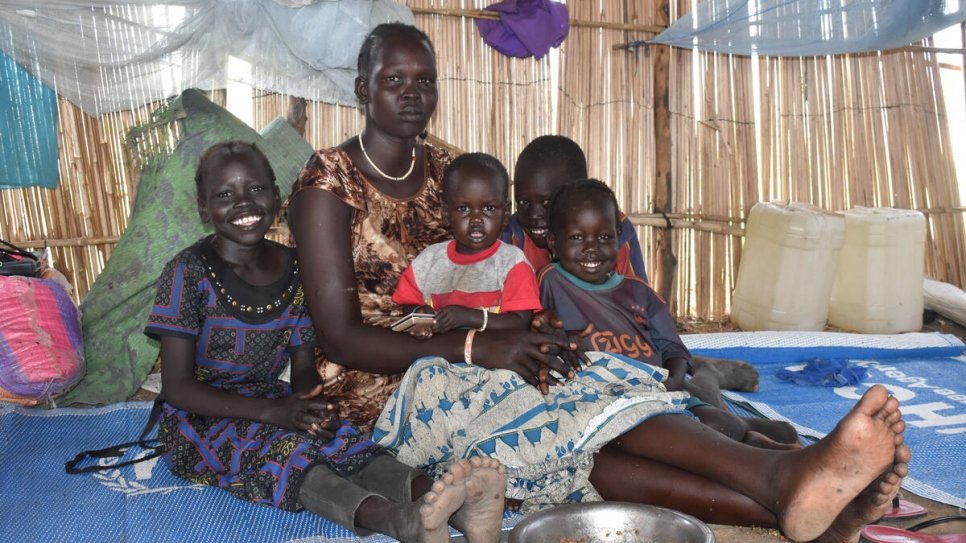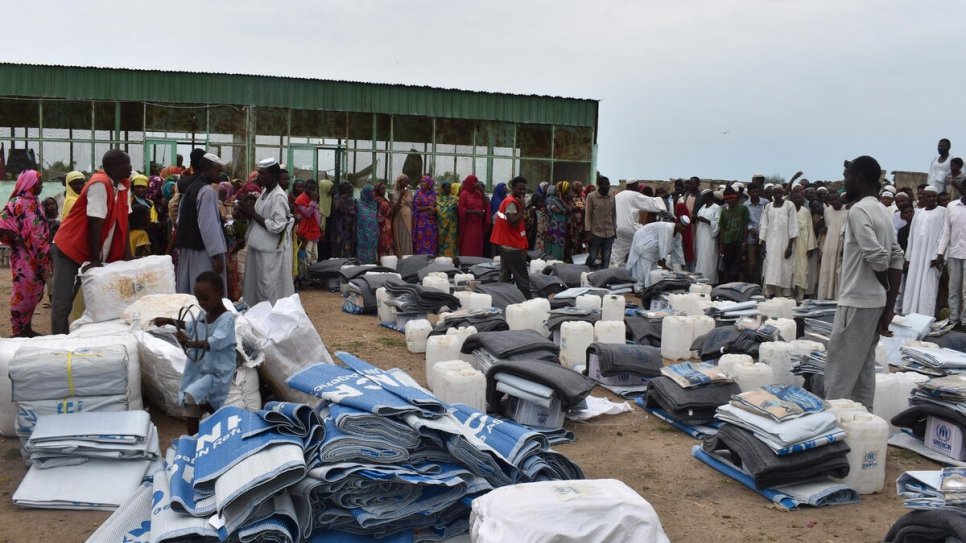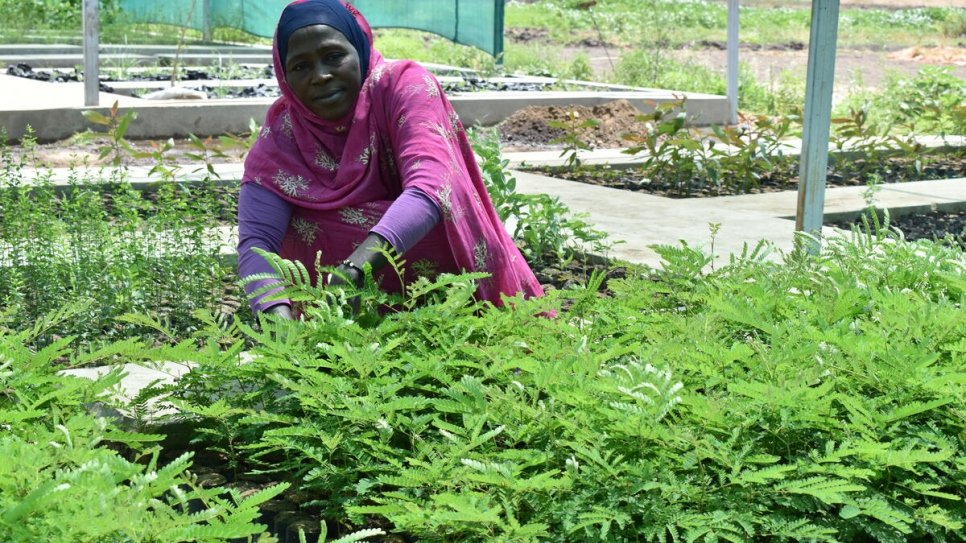Refugees count their losses as floods destroy camp in Sudan
Months after opening, Alganaa refugee camp in Sudan's White Nile State has been submerged by flood waters, leaving 35,000 South Sudanese refugees in need of urgent assistance.
South Sudanese refugee Nyawiga Toch points at the location where her house was before Alganaa camp flooded.
© UNHCR/Sylvia Nabanoba
Nyawiga Toch looks out over the water that covers Alganaa refugee camp in Sudan’s White Nile State. She can’t believe that barely a month ago, the camp was bustling with life.
Today, the small mud and papyrus houses that neatly crisscrossed its expanse and the shops that lined its boundaries are no more. The only remaining structures are three shops and some containers that were to be used as registration offices by UNHCR, the UN Refugee Agency.
The thirty-five-year-old mother of five and her husband were forced to leave their home in Fangak, South Sudan in May this year, after heavy rains destroyed their crops and home.
“We were left homeless and hungry,” she says.
Her family was among some 30,000 South Sudanese who fled across the border due to flooding, lack of food and insecurity. Alganaa was opened by UNHCR and Sudan’s Commission for Refugees (COR) in February of this year, becoming the tenth camp in White Nile state, which currently hosts over 280,000 South Sudanese refugees.
“We had a new home. Now, once more, we have nothing.”
In Alganaa, Nyawiga and her family set up their new home just before the rainy season came in July.
“At first, the water would dry up in a few days after the rain. Then, one day we woke up to find water flowing into the camp. It increased gradually, surrounding our houses, until we realized that we could no longer stay there,” Nyawiga explains.
The refugees fled, finding sanctuary with relatives and friends, and in public facilities like schools and hospitals in nearby Dabat Bosin and Alagaya camps. So far, over 2,000 displaced refugees have been moved from schools to communal shelters.
Nyawiga and her family are currently living in a communal shelter with other refugees as they wait to be relocated to another site.
“We had a new home. We had re-established ourselves. Now, once more, we have nothing,” she says sadly.
Availability of suitable land remains a serious challenge to finding them a more permanent home, further compounded by the large number of refugees who keep arriving in the country. In the meantime, UNHCR is providing them with relief, including sleeping mats, kitchen sets and jerrycans.
The local Sudanese community that offered the land where Alganaa camp was established were not spared from the flooding. Hussein Albashar, 35, grew up in a house close to the destroyed camp.
“I was born in this village and have lived here with my family ever since. Our house always withstood the rains until this year,” he says.
His family, including his elderly parents, now live in a temporary shelter provided by UNHCR. Unlike many of the other affected families, he decided to stay close to his old house, determined to rebuild it as soon as possible.
“I can’t leave the place I have always called home. I only hope next year’s rains will not be as bad as this,” he says.
Floods have displaced over 314,000 people across Sudan this year and resulted in loss of lives, homes, crops and livestock, according to the UN.
Kofi Dwomo, the Head of UNHCR’s office in White Nile State, believes the flooding is due to climate change.
“Although it rains every year, the impact is usually not this destructive,” he says.
Neighbouring South Sudan, where the majority of the refugees in Sudan come from, is also experiencing the worst flooding the country has seen in decades. The floods which engulfed Alganaa flowed into Sudan following heavy rains in South Sudan’s Upper Nile State.
“I only hope next year’s rains will not be as bad as this.”
Dwomo says what happened in Alganaa is “a clear sign that changes in climatic patterns and environmental conservation need to be taken more into account” and urges the authorities, civil society and local communities to continue collaborating on actions to avert future catastrophes.
While land here is generally flood-prone due to the mostly flat terrain, Dwomo says improving drainage systems and constructing dykes has proved effective in reducing flooding in other camps.
UNHCR also runs a reforestation programme in White Nile in partnership with Sudan’s Forests National Corporation. Tree nurseries are producing thousands of seedlings each year which refugees and locals plant around camps and in designated forest areas.
“Reforestation is crucial as it restores the forest cover in areas where trees have been cut down for firewood and for shelter materials,” explains Dwomo.
There is still hope that Alganaa can be salvaged, depending on the findings of a technical assessment.
Nyawiga wishes only to find a place where she and her family can finally settle.
“I just want a home for my family where we can be safe,” she says.






